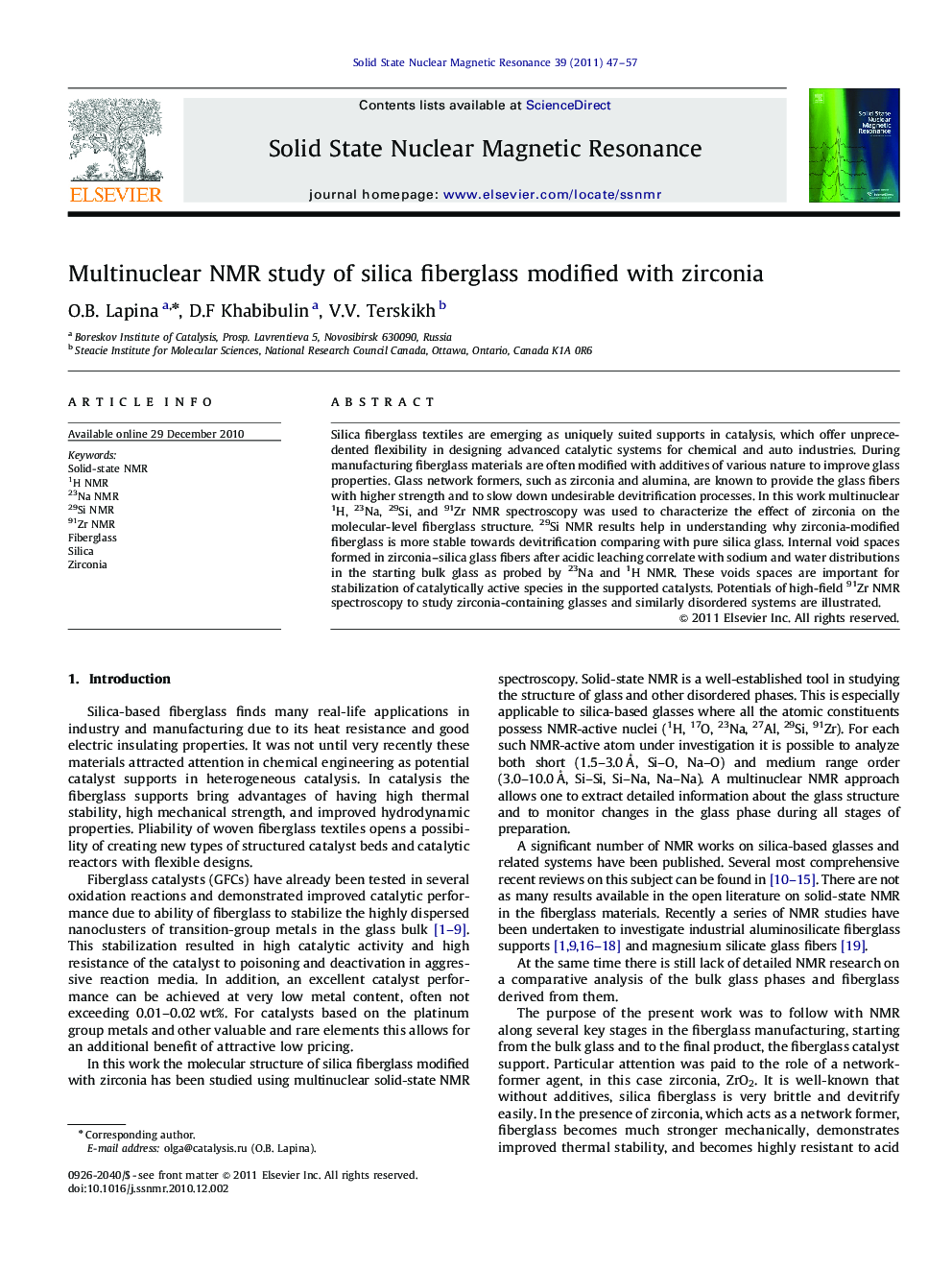| Article ID | Journal | Published Year | Pages | File Type |
|---|---|---|---|---|
| 5420601 | Solid State Nuclear Magnetic Resonance | 2011 | 11 Pages |
Abstract
Silica fiberglass textiles are emerging as uniquely suited supports in catalysis, which offer unprecedented flexibility in designing advanced catalytic systems for chemical and auto industries. During manufacturing fiberglass materials are often modified with additives of various nature to improve glass properties. Glass network formers, such as zirconia and alumina, are known to provide the glass fibers with higher strength and to slow down undesirable devitrification processes. In this work multinuclear 1H, 23Na, 29Si, and 91Zr NMR spectroscopy was used to characterize the effect of zirconia on the molecular-level fiberglass structure. 29Si NMR results help in understanding why zirconia-modified fiberglass is more stable towards devitrification comparing with pure silica glass. Internal void spaces formed in zirconia-silica glass fibers after acidic leaching correlate with sodium and water distributions in the starting bulk glass as probed by 23Na and 1H NMR. These voids spaces are important for stabilization of catalytically active species in the supported catalysts. Potentials of high-field 91Zr NMR spectroscopy to study zirconia-containing glasses and similarly disordered systems are illustrated.
Related Topics
Physical Sciences and Engineering
Chemistry
Physical and Theoretical Chemistry
Authors
O.B. Lapina, D.F Khabibulin, V.V. Terskikh,
